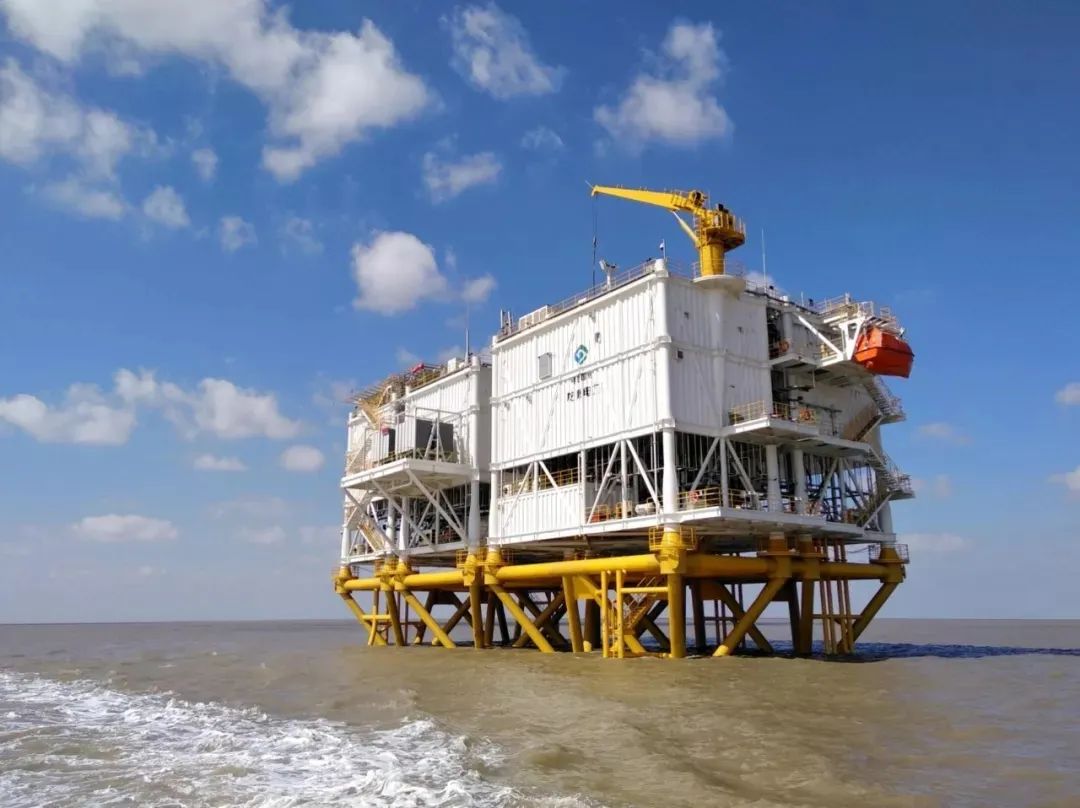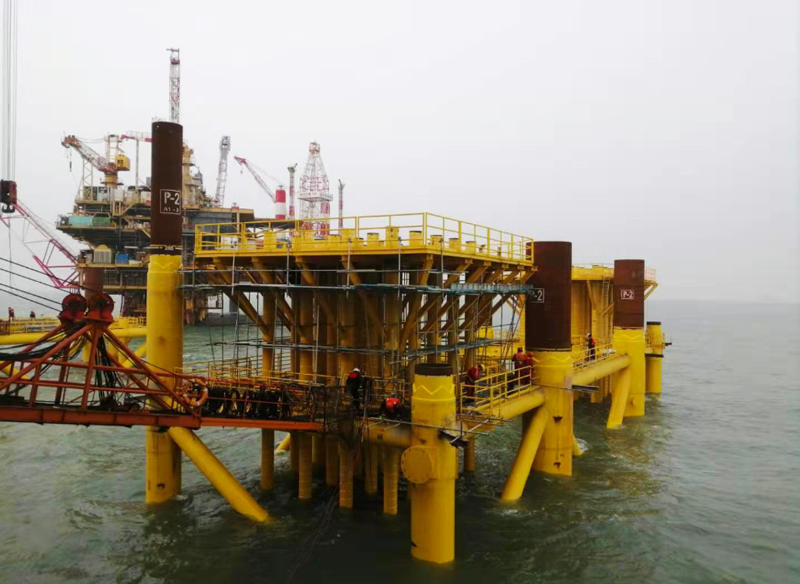A two component high solids high build paint, excellent resistant to seawater, chemicals, wear and cathodic disbandment
Features
Excellent adhesion & anti corrosion performance, excellent cathodic disbandment resistance.
Excellent abrasion resistance.
Outstanding water immersion resistance; good chemical resistance.
Excellent mechanical properties.
Marine heavy anti-corrosion coatings, like all other epoxy paints, maybe chalk and fade for long time exposure in the ambient atmosphere. However, this phenomenon does not affect the anti-corrosion performance.
DFT 1000-1200um could be reached by single layer, it will not affect adhesion and anti-corrosion performance. This will simplify application procedures and improve efficiency.
For general use, film thickness suggested is between 500-1000 um.


Recommended use
To protect steel structures in heavy corrosive environments, such as underwater areas of offshore structures, pile structures, outer wall protection of buried pipelines, and steel structure protection in environments such as storage tanks, chemical plants, and paper mills.
Adding suitable non-slip aggregate can be used as a non-slip deck coating system.
Single coating can reach to a dry film thickness of more than 1000 microns, which greatly simplifies the application procedures.
Application Instructions
Substrate and surface treatment
Steel: All surfaces must be clean, dry and free of contaminants. Oil and grease should be removed in accordance with the SSPC-SP1 solvent cleaning standard.
Before applying the paint, all surfaces should be evaluated and treated in accordance with the ISO 8504:2000 standard.
Surface Treatment
Sandblasting to clean the surface to Sa2.5 (ISO 8501-1:2007) level or SSPC-SP10, surface roughness 40-70 microns (2-3 mils) is recommended. Surface defects exposed through the sandblasting should be sanded, filled in or treated in a suitable way.
The approved primer surface must be clean, dry, and free of soluble salts and any other surface contaminants. Unapproved primers must be completely cleaned to Sa2.5 level (ISO 8501-1:2007) by sandblasting.
Touch up: It is suitable for coating on some firm and complete aging layer. But a small area test and evaluation is required before application.
Other surface: please consult ZINDN.
Applicable and Curing
● Ambient environment temperature should be from minus 5℃ to 38℃, the relative air humidity should not be more than 85%.
● Substrate temperature during application and curing should be 3℃ above dew point.
● Outdoor application is prohibited in severe weather such as rain, fog, snow, strong wind and heavy dust. During curing period if the coating film under high humidity, amine salts may occur.
● Condensation during or immediately after application will result in dull surface and poor-quality coating layer.
● Premature exposure to stagnant water can cause color changes.
Pot life
| 5℃ | 15℃ | 25℃ | 35℃ |
| 3hrs | 2hrs | 1.5hrs | 1hr |
Application methods
Airless spray is recommended, nozzle orifice 0.53-0.66 mm (21-26 Milli-inch)
The total pressure of the output fluid at the nozzle is not lower than 176KG/cm²(2503lb/inch²)
Air spray: Recommended
Brush/Roller: It is recommended for small area application and stripe coat. Multiple coatings may be required to achieve the specified film thickness.
Spray parameters
|
Application method |
Air spray |
Airless spray |
Brush/Roller |
|
Spray pressure MPA |
0.3-0.5 |
7.0-12.0 |
—— |
|
Thinner(by weight %)/%) |
10-20 |
0-5
|
5~20 |
|
Nozzle orifice |
1.5-2.5 |
0.53-0.66 |
—— |
Drying & Curing
Summer curing agent
| Temperature |
10°C(50°F) |
15°C(59°F) |
25°C(77°F) |
40°C(104°F) |
| Surface-dry |
18 hrs. |
12 hrs. |
5 hrs. |
3 hrs. |
| Through-dry |
30 hrs. |
21 hrs. |
12 hrs. |
8 hrs. |
| Recoating Interval (Min.) |
24 hrs. |
21 hrs. |
12 hrs. |
8 hrs. |
| Recoating Interval (Max.) |
30 days |
24 days |
21 days |
14days |
| Recoat consequent coating | Unlimited.Before applying the next topcoat, the surface should be clean, dry and free of zinc salts and pollutants | |||
Winter curing agent
| Temperature |
0°C(32°F) |
5°C(41°F) |
15°C(59°F) |
25°C(77°F) |
| Surface-dry |
18 hrs. |
14 hrs. |
9 hrs. |
4.5 hrs. |
| Through-dry |
48 hrs. |
40 hrs. |
17 hrs. |
10.5 hrs. |
| Recoating Interval (Min.) |
48 hrs. |
40 hrs. |
17 hrs. |
10.5 hrs. |
| Recoating Interval (Max.) |
30 days |
28 days |
24 days |
21 days |
| Recoat consequent coating | Unlimited.Before applying the next topcoat, the surface should be clean, dry and free of zinc salts and pollutants | |||
Preceding & Consequent coating
Marine heavy anti-corrosion coating can be directly applied on the surface of the treated steel.
Preceding coats: Epoxy zinc rich, Epoxy zinc phosphate
Consequent coat(topcoats): Polyurethane, Fluorocarbon
For other suitable primers/finish paints, please consult with Zindn.
Packaging, Storage and management
Packing:Base (24kg),curing agent (3.9kg)
Flash point:>32℃
Storage:Must be stored in accordance with local governmental regulations. The storage environment should be dry, cool, well-ventilated and away from heat and fire sources. The packaging container must be kept tightly closed.
Shelf life:1 year under good storage conditions from time of production.













